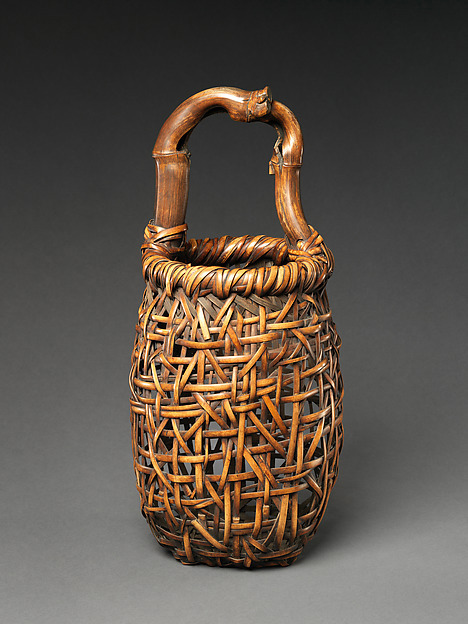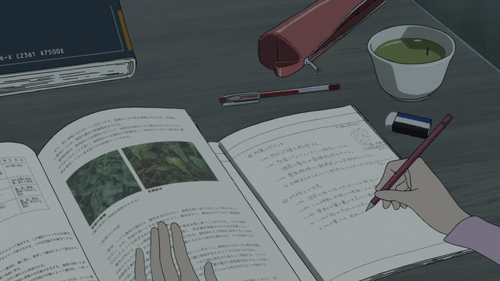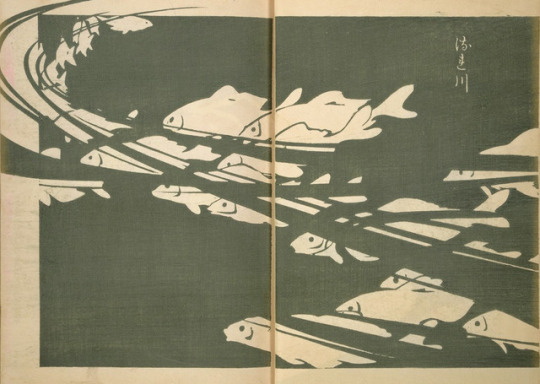Text
i'm serious once i've graduated by like late may you guys have to be on my case about getting back into wanikani. if it's june first and i haven't said anything at all about weird mnemonics or how many reviews i have someone needs to politely but firmly step into my ask box and say sasha, you are literally going to japan in two months and this is not the time to fuck around
#i would LOVE to make it to level 40 by the time i leave#that's a stretch goal for sure though lol#sasha.txt
9 notes
·
View notes
Text
Vocabulary and sentence composition exercises #1
Vocab
気がつく (きがつく)- to realize
蹴る (ける) - to kick
刺す (さす) - to sting; to bite
触る (さわる)- to touch; to feel
捕まる (つかまる)- to be arrested; to be caught
包む (つつむ)- to wrap; to cover
殴る (なぐる) - to strike; to hit; to punch
sentence
気がつく - 父がレストランでスマホを忘れられちゃった。
蹴る - 今日は、弟に店で自分を蹴られちゃった。
刺す - 蜂(はち)に刺されちゃった。
触る - これを触ってみてもいいですか?
捕まる - 彼は捕まった。
包む - バッグでサンドイッチを包んでおく。
殴る - 娘に殴られちゃった。
24 notes
·
View notes
Photo

Dancing Frog Flower Basket (Hanakago)
Artist: Hayakawa Shōkosai III (Japanese, 1864–1922)
Period: Taishō period (1912–26)
Date: 1918
Culture: Japan
Medium: Twisted (henchiku) bamboo and rattan
Dimensions:H. 20 ½ in. (52.1 cm); W. 8 ¾ in. (22.2 cm)
Classification: Bamboo
Credit Line: Promised Gift of Diane and Arthur Abbey
MET
280 notes
·
View notes
Text
知的
ちてき
intellectual
知的な読書のための正しい速度などというものは存在しない。
ちてき な どくしょ の ため の ただしい そくど など と いう もの は そんざい しない。
There is no such thing as the right speed for intellectual reading.

34 notes
·
View notes
Text
ここぞ
at the critical moment, when it counts
usually written using kana alone; often used as ここぞというとき or ここぞとばかり
あいつは駄目だ, ここぞという時に一発が出ないんだから。
あいつ は だめ だ、ここぞ と いう とき に いっぱつ が でないん だから。
That guy is no good, because he won't make a move when it matters most.

31 notes
·
View notes
Text

”side entrance” / 通用口
Why did I forget about this coolest social networking site? I'm home.
17K notes
·
View notes
Text
Japanese Apps instead of Duolingo
Beelinguapp
Bluebird
Bunpo
Busuu
Clozemaster
Drops
HeyJapan
Hiragana Quest
Infinite Japanese
kawaiiDungeon
Ling
Lingodeer
Lingopie
Lingvist
LingQ
LyricsTraining
Mango
Mondly
Oyomi Japanese Reader
renshuu
Takoboto Japanese Dictionary
Todaii
Qlango
Write It! Japanese
#i haven't used bunpo in a long time but i've heard it's gotten a lot of great updates!#also ofc wanikani for kanji#resources
530 notes
·
View notes
Text
しわ
しわ - wrinkle, crease
スーツを着る前に、しわをアイロンで取りましょう
Before wearing this suit, let's remove the wrinkles with an iron.
最近、顔にしわが増えてきた
Recently, the wrinkles on my face are increasing.
私は40歳けど、しわがない
I'm 40 years old, but I don't have wrinkles.
31 notes
·
View notes
Text
訓令式(くんれいしき): the kunrei romanization system

i saw people in the japanblr community talking about this recently, so i thought i'd post a quick explanation in case anyone wasn't already familiar with it!
in any case, you've probably noticed that there is not a consensus on how to write japanese using latin letters, whether it's what letters to use, whether to spell out long vowels, or even where to draw word boundaries. nowadays, people (especially non-japanese people) mostly use the hepburn system, which is quite phonetically intuitive. but there's also an older system called the kunrei system (訓令式)
the kunrei system was invented by the japanese government for official usage inside japan in the 1930s. unlike hepburn, kunrei is NOT based on the sounds of the japanese language but rather the strictest interpretation of its syllabic orthography (that is to say, the kana).
to my understanding the kunrei system is still taught in japanese schools, but it definitely feels old-fashioned (it's actually especially common to see in writing by japanese linguists!). you also may have heard that recently the japanese government is changing their official romanization rules, for exactly the reasons that most people prefer the hepburn system, i.e., kunrei doesn't make much intuitive sense compared to the actual spoken language. but it's still useful to be able to read it!
if you're interested, here are the general rules of the kunrei system:
whichever consonant precedes /a/ in the /aiueo/ vowel order, that consonant should precede all the other vowels as well. so, さ is /sa/, and therefore し is /si/. は is /ha/, and therefore ふ is /hu/. わ is /wa/, and therefore を is /wo/.
in words with little ゃゅょ, that whole kana is always spelled out. so しゃしん becomes /syasin/.
the diphthong おう is interpreted as a long お vowel. so とうきょう becomes /tookyoo/. this reanalysis does not happen for the えい diphthong (for some reason?? lol).
here are some wacky kunrei romanizations:
サーシャ → saasya (my name lol)
不可欠(ふかけつ) → hukaketu
手作り(てづくり) → tedukuri
充実(じゅうじつ) → zyuuzitu
故障中(こしょうちゅう) → kosyootyuu
anyways yeah the kunrei system is nuts....as i said, transcription of any language into a new writing system is never easy, and i think it's really cool to see what the first official steps were towards romanization back in the 1930s!
16 notes
·
View notes
Text
let's build a village together 💕


i found this super cute animal crossing picrew and decided i wanted to live in a video game with y'all today 😂 disclaimer: i've never actually played animal crossing because i fear if i start, i'll never stop 😅
also drop an "achievement" you unlocked lately to make things more interesting and celebrate the small wins(?) in life!! 🎉
🏆 CHAOTIC MULTI-TASKER — achieved when i added 2 books to the one i'm currently reading and started learning one more language in addition to my main 3 💀 (and making barely bare-minimum progress in everything now 🤡)
tagging all my moots because this is my first time starting a tag game and i'm excited 🤭 love you guys!! (and sorry if i missed anyone who follows me via main but i follow your sideblog or smth 😭 just consider yourself tagged as well 😉) 💞 @pianistbynight @winryrockbellwannabe @megumi-fm @obakanosandoitchi @manasseh @jukain4216 @shoosiopao @tea-tuesday @yughostlavia @shhhitscoffeetime @phnxstudies @girl-please-study @studykac @nelyastudies @soul-ology @lemonempress @alittlebreak @whenmemoriesfrost @cheste7 @juststudyyy @solarsapphic @ros3ybabe @malaidarling @indigostudies @tokidokitokyo @cinammon-buns @hanabeeri @relativeficti0n @issacovegx @sayitalianohome @perabera @paramnesia9 @cravingstudyvalidation @mortuarymorticia @getbreaded @roxysbbg @ilonar0 @panda-studiesmed @casiopeasmiles @strangeclayanimal @anna--studies @socksgrowssocks @the-awesomecosmos-studies @wwitss
230 notes
·
View notes
Text
後味
あとあじ
aftertaste
言い争いをして後味の悪い思い出が残った。
いいあらそい を して あとあじ の わるい おもいで が のこった。
The quarrel left an unpleasant aftertaste.

50 notes
·
View notes
Text
related: はずだ = should be the case that
トイレはあそこにあるはずです。 = the bathroom should be over there.
もう帰っているはずだ。 = she should be home by now.
あの人は、きっと試合に勝つはずだ。 = that person should win the match for sure.
N4 文法: はずがない
はずがない= cannot be (its impossible)
How to use:
verb stays in dictionary form + はずがない
For な-adjective you な before the はずがない, for nouns you add の before.
Examples:
彼はそなことを言うはずがない- he would never say that
そんなはずがない。- That cannot be true
彼女の話は本当のはずがない- her story cannot be true
そな大きな量を全部食べられるはずがない- there's no way you can eat that whole portion
#i hope you don't mind i added to your post!#i feel like these are both p common constructions#grammar#sasha.txt
92 notes
·
View notes
Text
Essay Phrases in Japanese
Beginning
初めに はじめに to begin with (first of all)
まず to start with (first of all)
最初に さいしょに first
第一に だいいちに first of all
劈頭第一 へきとうだいいち first and foremost
Continuation
次に つぎに next
更に さらに furthermore
そして and (thus)
そのうえに in addition (furthermore)
また also
並びに ならびに both ~ and ~ (~ as well as ~)
及び および and (as well as)
それだけでなく not only ~ but also ~
のみならず besides (as well as)
しかも however
すでに already
その結果 そのけっか as a result
それにしては considering that
それに対して それにたいして in contrast
ため in order to (because of)
というのは the reason why is
にしたがって following (in accordance with)
にとって for (concerning)
によって due to (because of)
一方で いっぽうで on the one hand
まったく really, truly, entirely
全て すべて overall (in general)
多数の たすうの majority
必ず かならず definitely
急速に きゅうそくに rapidly increasing
ますます increasingly (more and more); decreasingly (less and less with negative)
次第に しだいに gradually (little by little)
現在 げんざい nowadays
確かに たしかに it is true that... but
要すると/要するに ようすると/ようするに in short
非常に ひじょうに extremely
絶対 ぜったい absolutely
誠に まことに absolutely
によると according to
したがって accordingly (therefore)
事実上 じじつじょう actually (as a matter of fact)
だって also
それに加えて それにくわえて in addition to this
Ending
結局 けっきょく after all
最後に さいごに in closing, in conclusion
要約すると ようやくすると in summary
つまり to sum up, in the end
結論は けつろんは in conclusion
結論というと けつろんというと to conclude
このように thus, hence
全体的に ぜんたいてきに overall, on the whole
Phrases from Quizlet by @uni-venture and Talk in Japanese
914 notes
·
View notes









